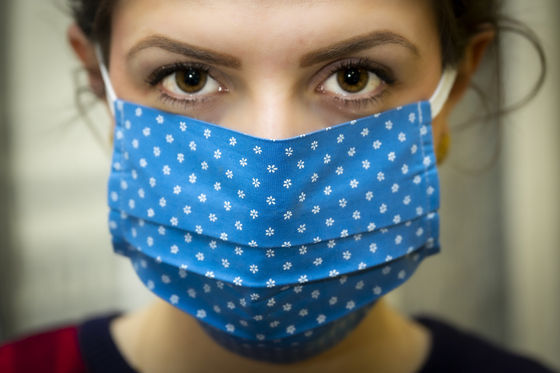Multiple research results have been reported that '80% of new coronavirus infection cases are caused by only 10% of people'

It is known that 20% of infected people cause more than 80% of secondary infections, and it has been said that
Opinion | Stop the Coronavirus Superspreaders-The New York Times
https://www.nytimes.com/2020/06/02/opinion/coronavirus-superspreaders.html
Most COVID cases don't spread virus--it's the superspreaders we need to stop | Ars Technica
https://arstechnica.com/science/2020/06/just-10-20-of-covid-19-cases-behind-80-of-transmission-studies-suggest/
For viral infections, the route of infection can be examined by the ' contact tracking method, ' in which the behavior of the infected person is investigated to find out who had the disease. Contact tracing has shown that most infections do not spread the virus in most infectious diseases, and only a few, called 'super spreaders,' explode.
The following article explains how the Super Spreader spreads infections.
Who is the 'Super Spreader' that spreads infectious diseases? -GIGAZINE

According to Elizabeth McGluh, director of the Center for Infectious Disease Dynamics at Pennsylvania State in the United States, all infectious diseases have a tendency that '20% of infected people cause more than 80% of secondary infections.' And, several new research results have been newly reported that the new coronavirus also follows this trend.
Biostatistics epidemiologist Benjamin Cowling examined 1038 cases in Hong Kong, with approximately 66% (689) of all cases coming from abroad and the remaining 349 cases. Of these, 196 cases were found to be caused by only 6 super spreaders. The super spreader, which transmitted COVID-19 to the most people, is believed to have spread the infection in multiple bars, with 73 cases due to direct infection alone and 106 cases including secondary to quaternary infections. Is estimated to have caused.

In summarizing his research, Cowling and colleagues pointed out that 'only 20% of Hong Kong's COVID-19 cases are involved in 80% of all cases.' Of the remaining 80%, 10% said they would only spread to 1-2, and 70% said they wouldn't spread the virus to others.
Cowling is not alone in making such claims. A research team at the University of London 's Graduate School of Hygiene and Tropical Medicine investigated the spread of the new coronavirus outside China (PDF file). In a study , 'a very small number of people below 10% infected 80% of secondary infections.' pointed out that there is a possibility that the cause ', the United States and the researchers of China was attended by a large number research is, as the result of the analysis of 391 cases that occurred in China in Shenzhen (Shenzhen) city,' 9 percent of all cases Were involved in 80% of the infections.'
Given the involvement of super spreaders in many of these infections, Cowling argues that 'we should focus on public health policies that prevent the spread of super spreaders.' 'In the case of Hong Kong, cluster outbreaks occurred at weddings, temples, parties, karaoke, and eating hot pot together,' Cowling said in an article written in the New York Times in the American Letters. I know.' He mentioned Japan's policy of 'avoid three denseness ' and said, 'It is important to avoid tightness, crowding, and tightness so that super spreaders do not occur.'
Related Posts:
in Science, Posted by darkhorse_log






